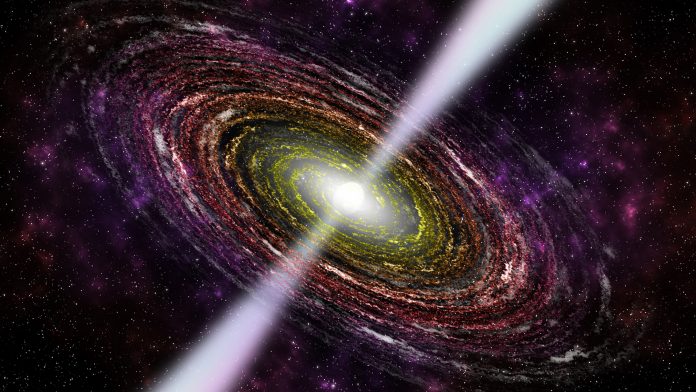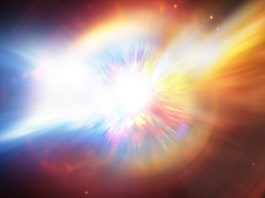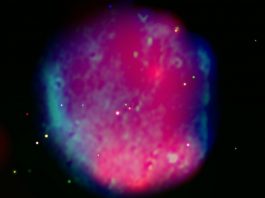Researchers conduct a unique study highlighting how the explosion of a stripped massive star in a supernova can lead to the development of a heavy neutron star or a light black hole.
This novel research sheds light on one of the most perplexing mysteries to materialise from the observation of neutron star mergers by the gravitational wave observatories Advanced Laser Interferometer Gravitational-Wave Observatory (LIGO) and Virgo.
Detecting gravitational waves
The first detection of gravitational waves by the LIGO in 2017 was a neutron star merger that largely corresponded to the hypothesis of astrophysicists. However, the second detection, in 2019, was a merger of two neutron stars whose collective mass was unpredictably enormous.
“It was so shocking that we had to start thinking about how to create a heavy neutron star without making it a pulsar,” remarked Enrico Ramirez-Ruiz, professor of astronomy and astrophysics at UC Santa Cruz.
Compact astrophysical objects such as neutron stars and black holes are difficult to research because they tend to be invisible when they are stable, releasing no visible radiation.
“That means we are biased in what we can observe,” Ramirez-Ruiz said. “We have detected neutron star binaries in our galaxy when one of them is a pulsar, and the masses of those pulsars are almost all identical—we don’t see any heavy neutron stars.”
LIGO discovers a heavy neutron star merger
LIGO’s detection of a heavy neutron star merger at a rate similar to the lighter binary system indicates that heavy neutron star pairs should be fairly common. This observation leads to the question: why do they not show up in the pulsar population?
In this novel study, Ramirez-Ruiz and his colleagues centred their research on the supernovae of stripped stars in binary systems that can produce ‘double compact objects’ comprising of either two neutron stars or a neutron star and a black hole. A stripped star, often known as a helium star, is a star that has had its hydrogen envelope removed by its interactions with a companion star.
The study’s findings were published in Astrophysical Journal Letters, and was led by Alejandro Vigna-Gomez, an astrophysicist at the University of Copenhagen’s Niels Bohr Institute.
“We used detailed stellar models to follow the evolution of a stripped star until the moment it explodes in a supernova,” Vigna-Gomez commented. “Once we reach the time of the supernova, we do a hydrodynamical study, where we are interested in following the evolution of the exploding gas.”
Massive stripped star
The stripped star in a binary system with a neutron star companion starts out ten times larger than the Sun, but is so dense it is smaller than the Sun in diameter. The last stage of its development is known as a core-collapse supernova, which leaves behind either a neutron star or a black hole, depending on the final mass of the core.
The group’s findings highlight that when the massive stripped star explodes, some of its outer layers are quickly expelled from the binary system. However, some of the inner layers are not removed and ultimately fall back onto the newly established compact object.
“The amount of material accreted depends on the explosion energy—the higher the energy, the less mass you can keep,” Vigna-Gomez added. “For our ten-solar-mass stripped star, if the explosion energy is low, it will form a black hole; if the energy is large, it will keep less mass and form a neutron star.”
Understanding neutron stars
These findings not only shed light on the development of heavy neutron star binary systems, but also forecast the development of neutron star and light black hole binaries, such as the one that combined in the 2020 gravitational wave event GW200115.
An additional significant result is that the mass of the helium core of the stripped star is vital in determining the nature of its interactions with its neutron star companion and the eventual outcome of the binary system.
A sufficiently large helium star can prevent transferring mass onto the neutron star. However, in the case of a smaller helium star, the mass transfer process can transform the neutron star into a rapidly spinning pulsar.
“When the helium core is small, it expands, and then mass transfer spins up the neutron star to create a pulsar,” Ramirez-Ruiz explained. “Massive helium cores, however, are more gravitationally bound and don’t expand, so there is no mass transfer. And if they don’t spin up into a pulsar, we don’t see them.”
“Transferring mass onto a neutron star is an effective mechanism to create rapidly spinning (millisecond) pulsars,” Vigna-Gomez concluded. “Avoiding this mass transfer episode as we suggest hints that there is a radio-quiet population of such systems in the Milky Way.”









